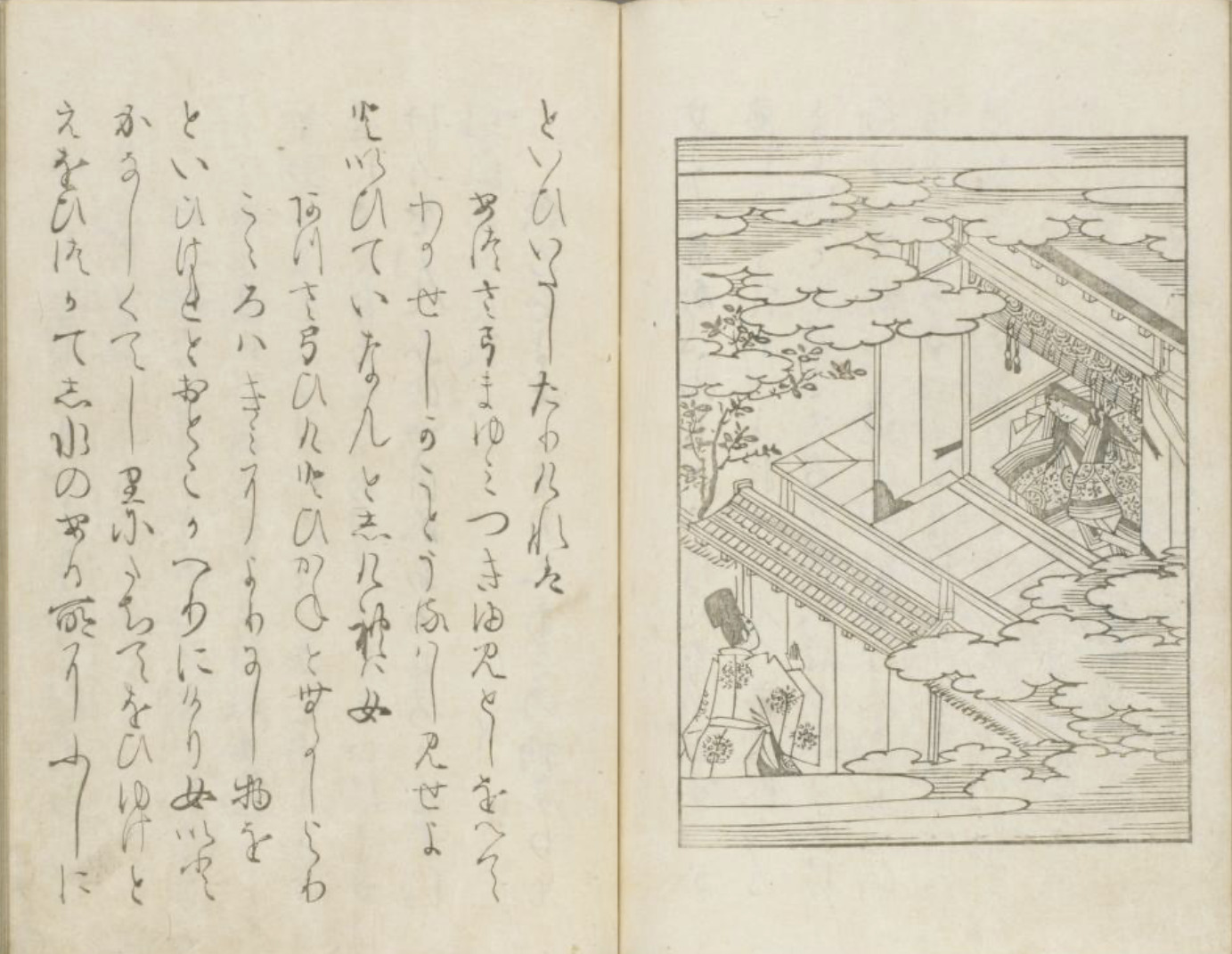Early Modern Text - The Tales of Ise
The Tales of Ise, or Ise Monogatari, is another text that is critical to Japanese culture. It is a collection of 125 sections or "measures" in Japanese, and each section combines prose and poems. Each section stands alone, with few connections between them (Bowring 403). This text has a straightforward, subtle style, which many Japanese connoisseurs praise; however, its English translation has been criticized for being overly flat and vapid (McCullough 4). Both the author and date of original publication are largely unknown, but it is assumed that most of the poems were written in the ninth and tenth centuries, in the premodern period. This would mean that The Tales of Ise was transmitted through handwritten manuscripts in its original form. Similarly to the Kojiki and the Nihon Shoki, scribes would have written it on handmade paper, using brushes and ink. The aristocracy highly respected these manuscripts, and it was not widely popular outside of it at this point.
There have been many theories concerning the author of this text, with speculation on various authors and poets of the time. Though nothing has been confirmed, many attribute it to Fujiwara Sadaie, a court noble and poet. Additionally, it is believed that the protagonist is based on Ariwara no Narihira, a poet of the time (McCullough 10). The poems delve into various themes, focusing on nature, culture, the court society, and love and relationships.
In the mid-1600s, in the early modern period, woodblock printing began to spread in Japan, completely shifting the literature culture and making it more widespread and accessible. Woodblock printing was used for both art and writing, making it very useful, especially in the case of The Tales of Ise, as there is both text and art. The process began with the text being written by a scribe; the manuscripts would then be given to woodcarvers. The woodcarvers would carve the lines into woodblocks, which would be painted. They would then press washi paper, which was made from plant fibers, and rubbed together with a brush until the ink had transferred. This was repeated to create texts. Often, the labor would be split between people, with the more skilled taking on the more challenging carving roles. This division of labor allowed woodblock printing to grow immensely popular (McManamon 445,446).
Woodblock printing made The Tales of Ise much more accessible and widespread. The beauty of the art accompanying the text also allowed for a much more all-encompassing experience for readers.

